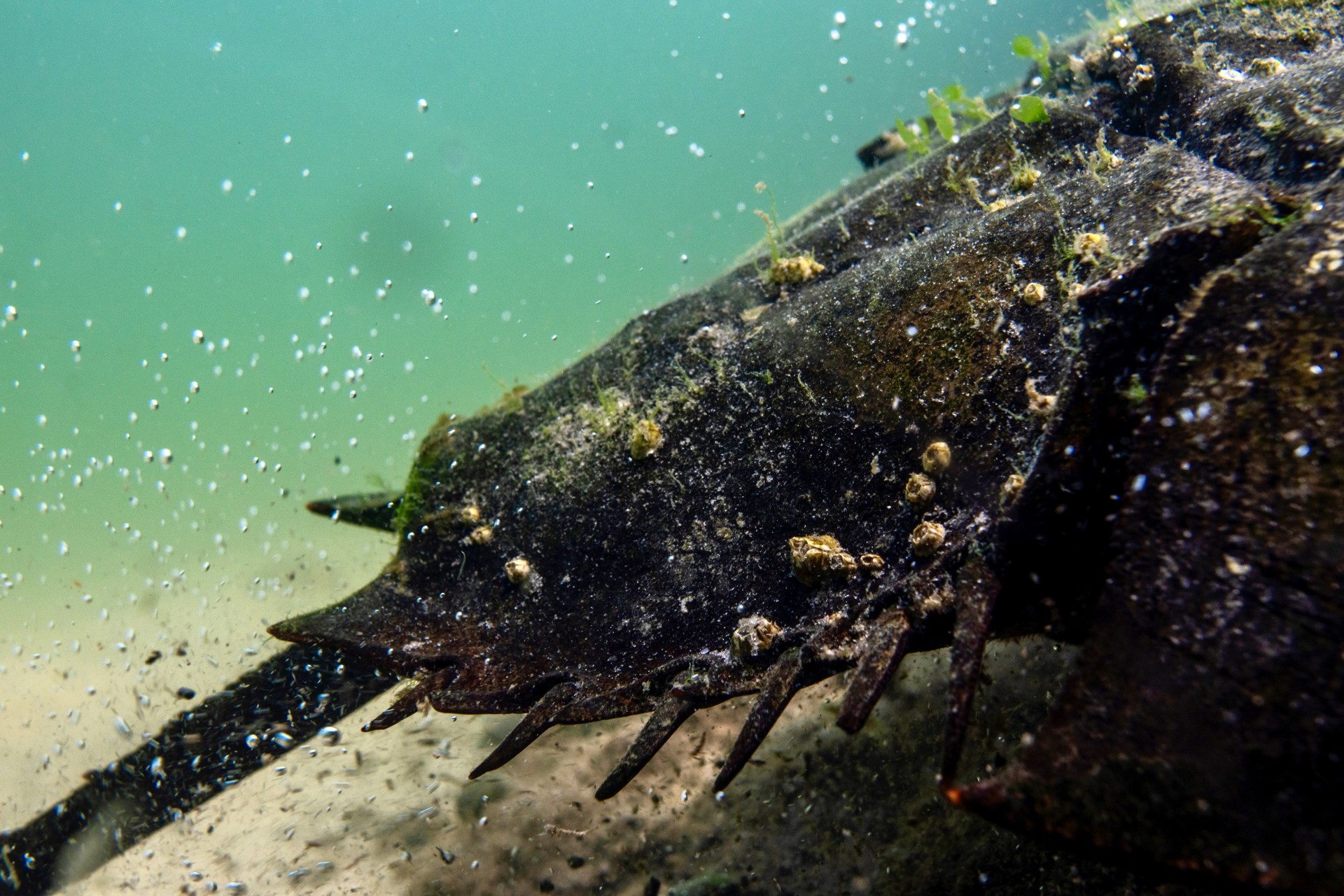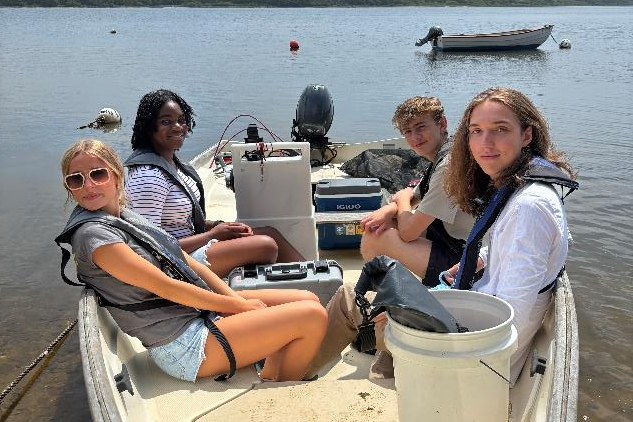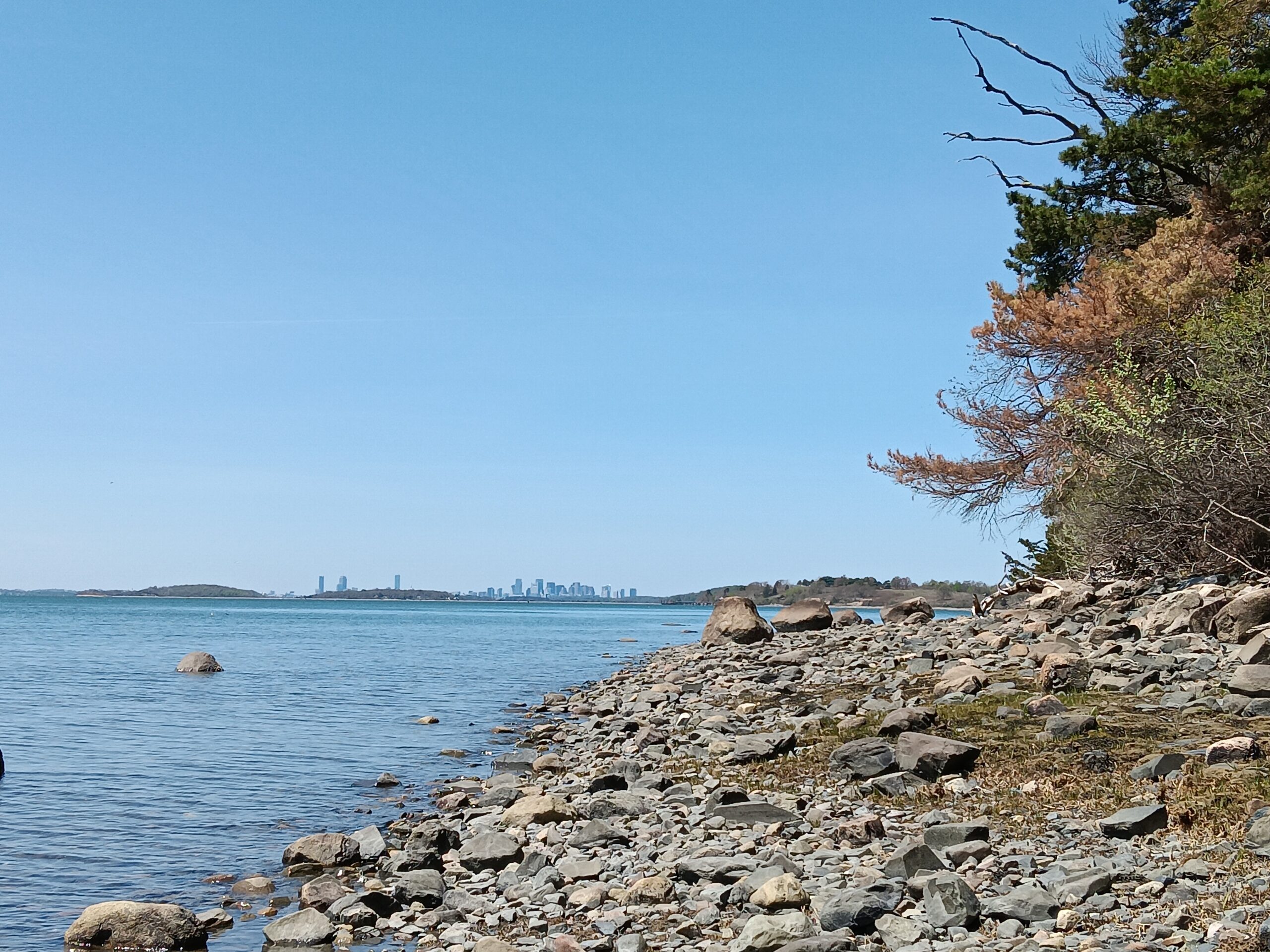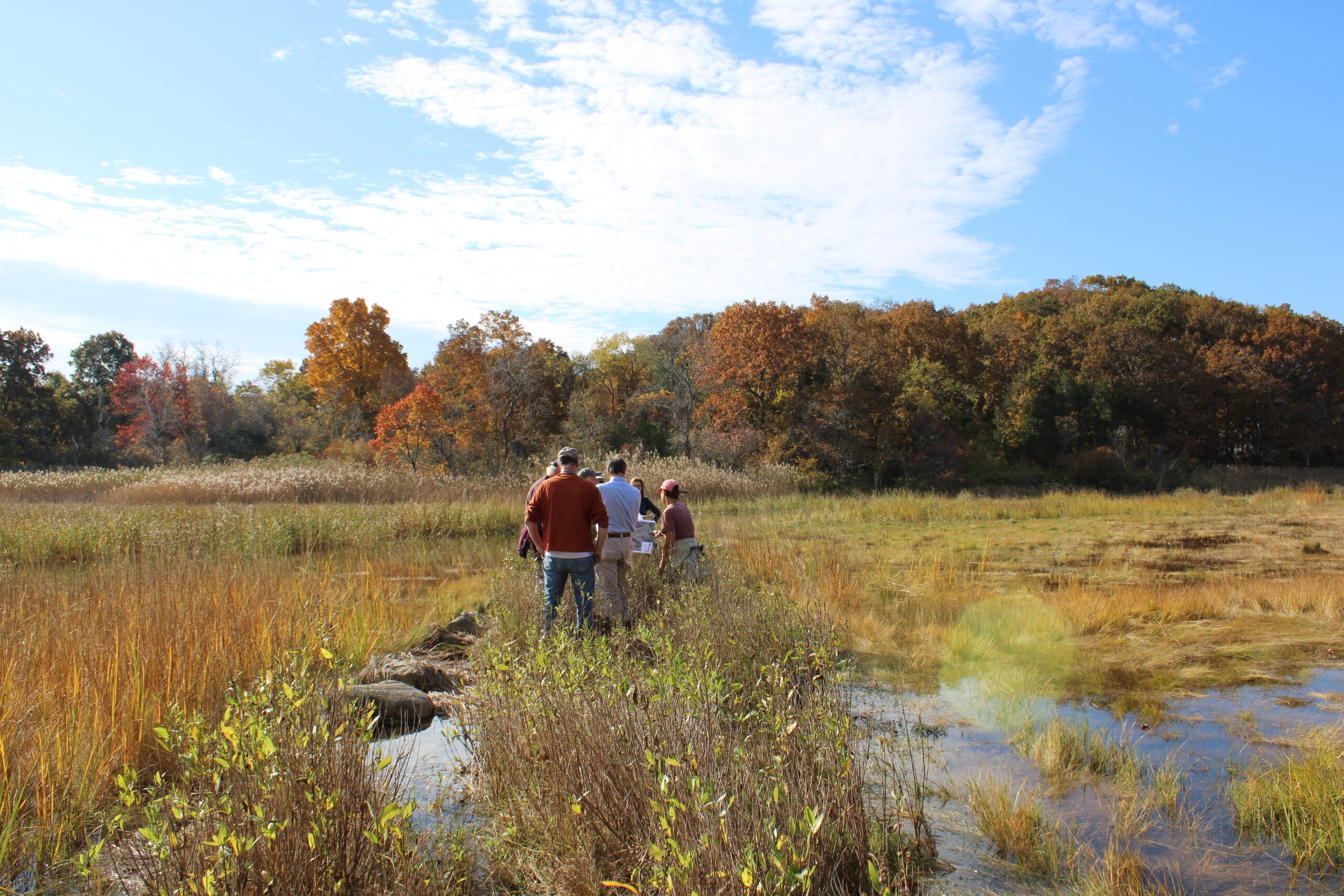
On Friday, October 27, 2023, several members of the Ipswich community joined Lead Coastal Ecologist Russ Hopping and Coastal Project Manager Alejandra Narvaez at Greenwood Farm to learn more about the Trustees’ plan to remove two tidal constrictions within the surrounding marsh. Neighbors of the Greenwood Farm property and members of the Ipswich Historical Commission ventured out into the marsh at high tide to learn about proposed plans to restore the natural hydrology of the marsh, to better ensure its climate resilience into the future.
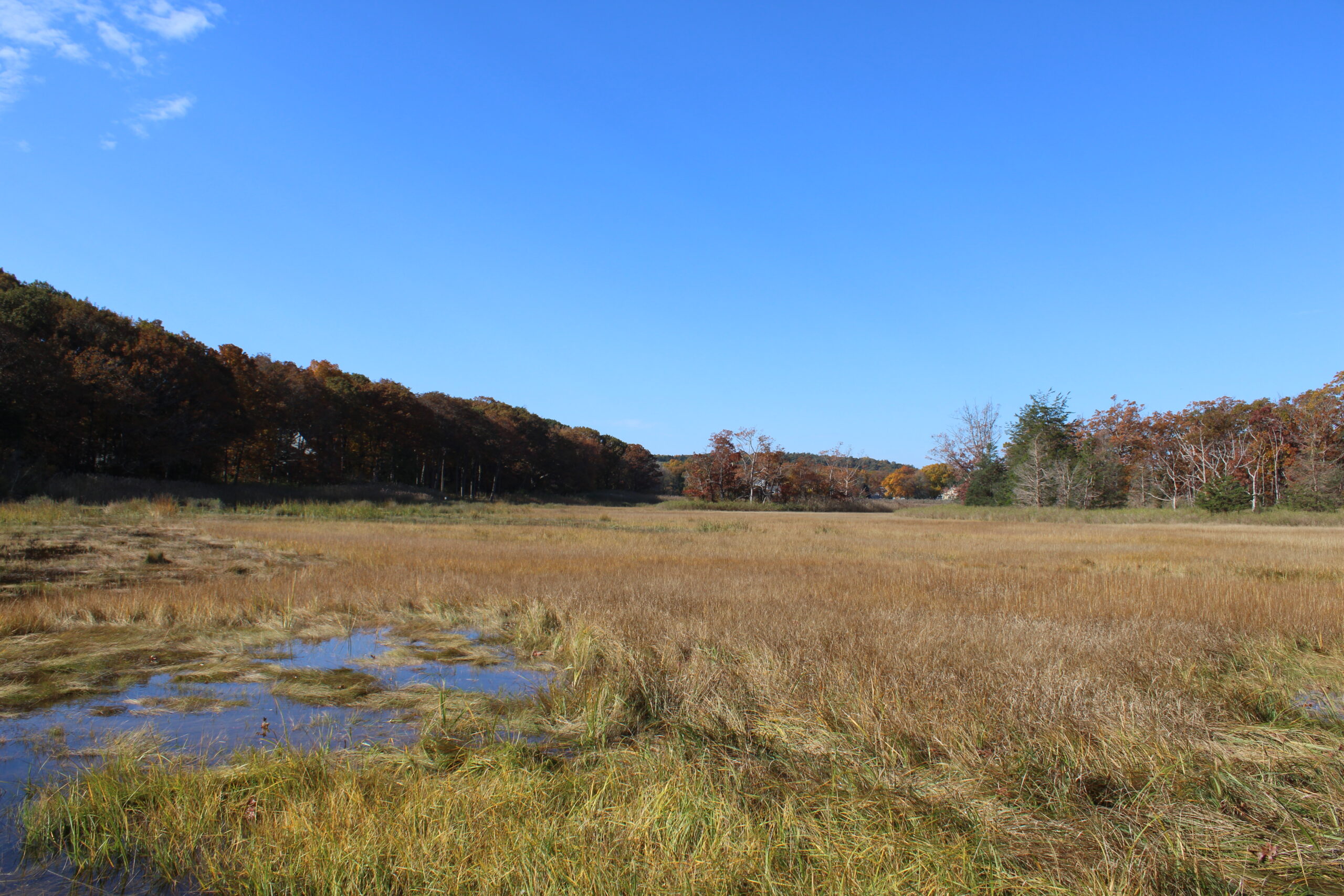

Greenwood Farm includes approximately 39 acres of salt marsh which are currently impacted by two tidal constrictions on the south side of the farm, restricting ebb and flow from the marsh platform (these higher acres of marsh). The restrictions are contributing to abundant invasive species (phragmites) growth and marsh decline. Both restrictions are adjacent to each other and will require in-channel rubble to be removed.
The balance of historic use with planning for potential sea-level rise and storm events related to climate change was the most prominent theme of the October visit. The Trustees is committed to honoring the history of all properties, while also maintaining habitat health and climate resilience. Community members were shown photos and provided information about the historic site by Susan Hill-Dolan, a fellow Ipswich resident and neighbor of the property, and the Trustees’ Curator of Ipswich properties.
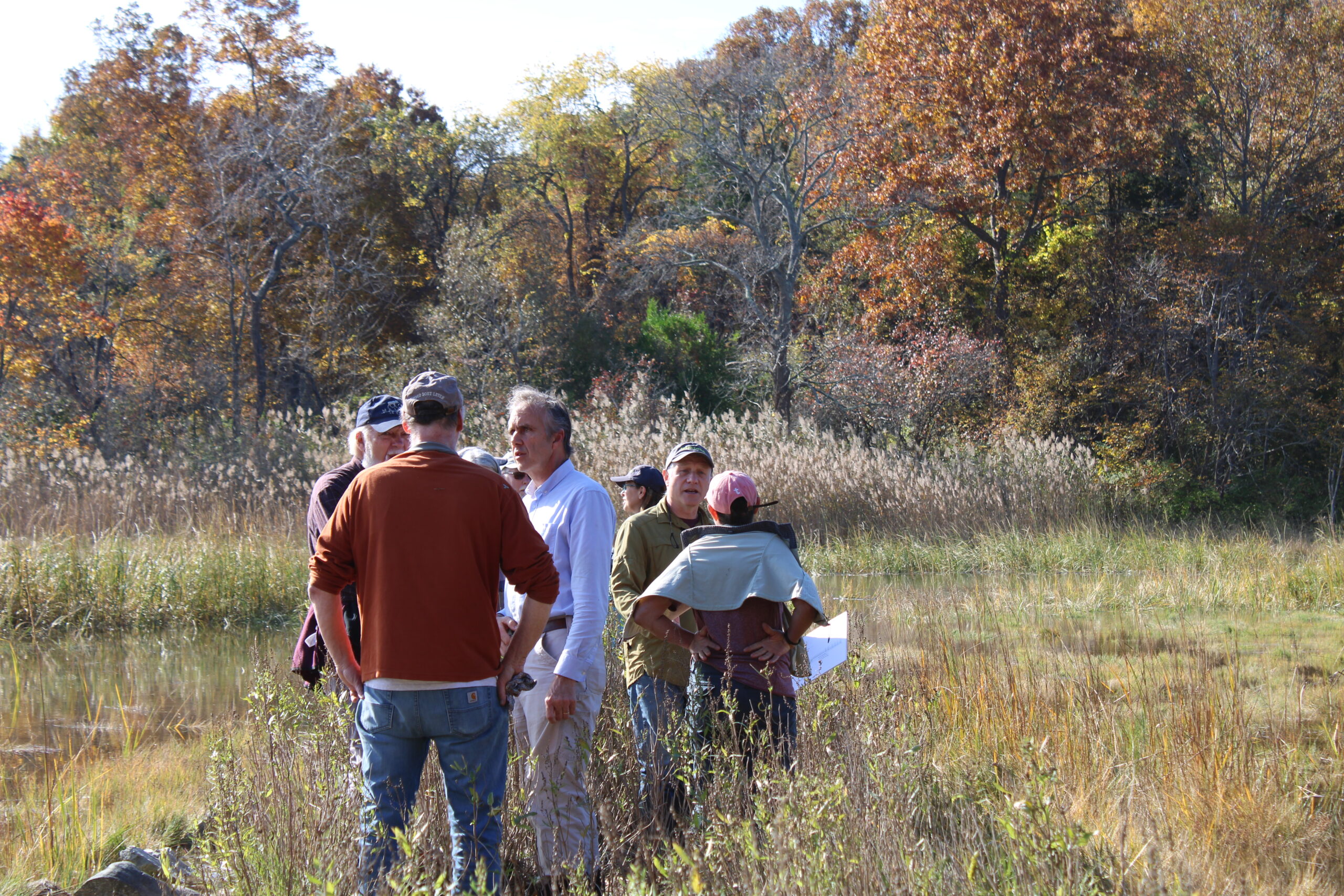
Historical and Ecological Significance of Greenwood Farm
Greenwood Farm is a 216-acre historic saltwater farm. The reservation takes its name from Thomas S. Greenwood, who farmed the property from 1828-1883, and built the white farmhouse still located there today. To its rear is the 1694 Paine House, a yellow-clapboard saltbox, which is a rare example of First Period architecture (1625-1725) in its original rural location. Six generations of the Paine family made their home at the farm, including Robert Paine, foreman of the Salem witch trial jury.
The marsh located on the property was used agriculturally, as were many parts of the Great Marsh. The hydrology was altered through the creation of a series of ditches to allow for ideal farming conditions. As our understanding of salt marsh ecology has evolved over the years, so has our knowledge of how these human alterations hinder natural processes within the salt marsh ecosystem. By restoring the original hydrology of the marsh, there is the potential for greater resiliency in the face of the changing climate.

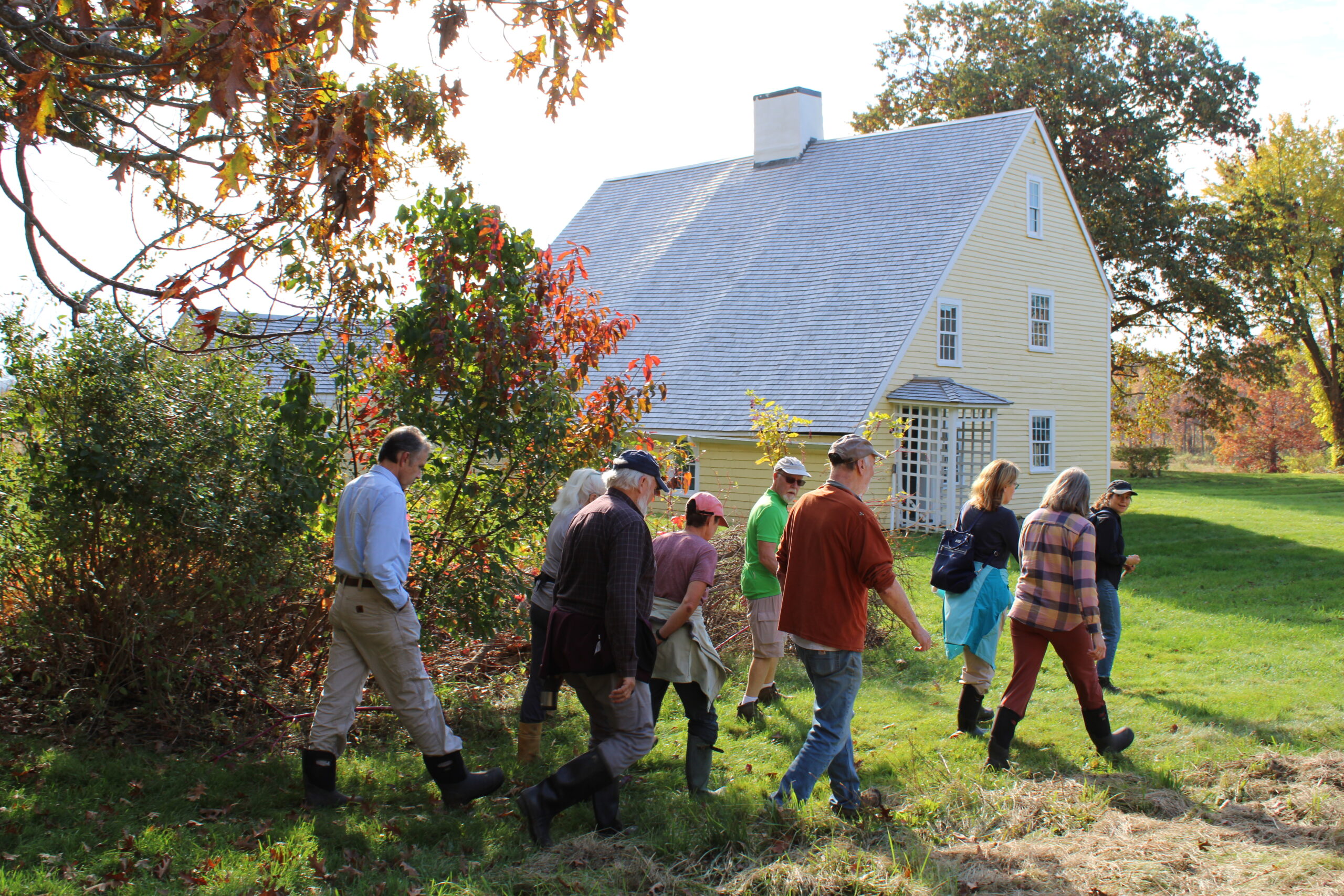
“The historic salt marsh farm and surrounding community are a great example of how important it is to understand the history of land use on our marshes and how it has contributed to the current hydrology and overall marsh health decline,” shared Alejandra. “We value the history of this property and acknowledge the interventions that are needed to ensure resilience at this site, so the story may continue to be told in the decades to come.”
Planning for the Future
The work at Greenwood Farm is part of an ongoing effort to restore the natural hydrology of the Great Marsh ecosystem, of which the Trustees owns around 1300 acres. Work is underway at sites including Old Town Hill and Crane Wildlife Refuge, and funding has been secured for the conceptual design work at Greenwood. The constriction removal at Greenwood Farm is part of a larger effort led by the Ipswich River Watershed Association (IRWA) through a NOAA grant to produce conceptual designs to remove 21 high-priority hydro-barriers in the Parker Ipswich Essex (PIE)-Rivers region.
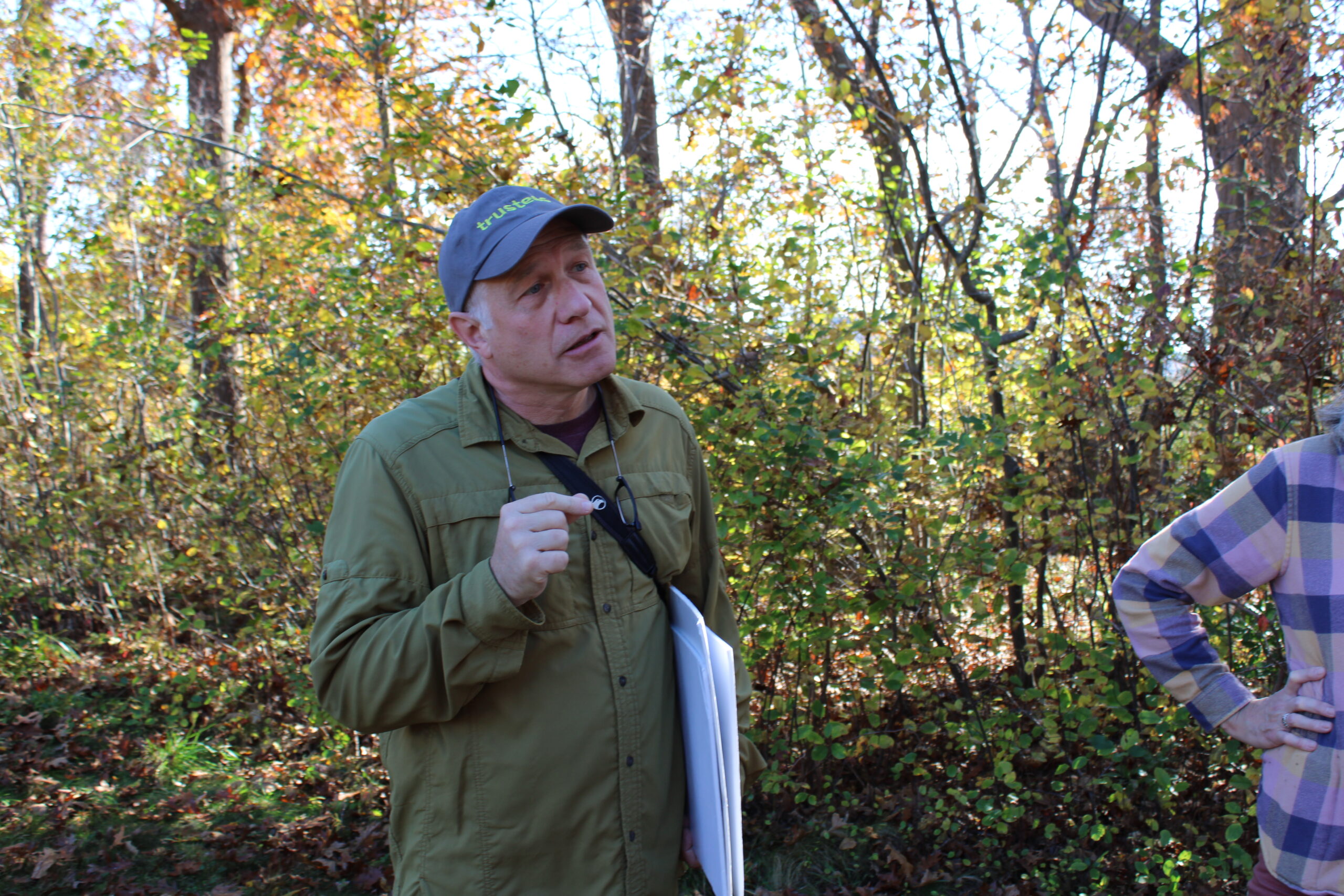
Community members braved high tides and knee-deep water to gain a better understanding of the existing tidal constrictions and why their removal will play a pivotal role in the marsh’s future success. Russ and Alejandra shared maps of existing natural and man-made ditches within the area of marsh at Greenwood, and explained the process of healing the marsh, including ditch remediation and runnelling.
The Trustees is grateful to the neighbors and community members who took the time to learn from our staff and visit the site. Visit our pages about our work on the Great Marsh or Greenwood Farm to learn more.
